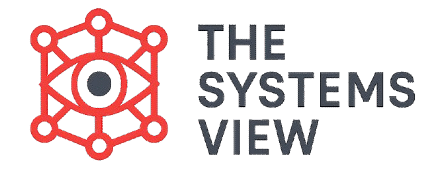If you have ever wondered why some problems seem to disappear forever while others keep coming back stronger, the answer lies in feedback loops. Feedback loops are the invisible engines that drive all system behavior, whether you are looking at a market crash, the human body, or a team’s morale.
A feedback loop is simply a chain of cause-and-effect that circles back on itself. The result of an action becomes the input for the next action, causing the process to continue. Systems Thinking teaches us that once you can identify these loops, you can stop fixing symptoms and start changing the system’s fundamental design.
The Anatomy of a Loop: Circular Cause and Effect
In traditional, linear thinking, an action causes a result, and the story ends there. In a system, the story is circular: the result causes a new action, which influences the original variable. This circularity is the defining feature of any loop.
The Flow of Influence
Every feedback loop, regardless of its type, has a flow that closes the circle:
- Action/Input: A starting change or effort is made in the system.
- Sensing: The system measures the change that occurred.
- Correction/Influence: The measured result cycles back to either strengthen or weaken the original action.
The key to analysis is mapping this circle correctly. Systems thinkers use diagrams like Causal Loop Diagrams (CLDs) to show these chains of influence.
The Stabilizing Force: Balancing Loops
The first type of loop is the Negative Feedback Loop, often called a Balancing Loop (B). It is the core mechanism of stability and control in every system.
Purpose: Goal-Seeking and Homeostasis
The primary function of a balancing loop is goal-seeking. It works to counteract or negate any change that moves the system away from its desired state or goal. It is a force for calm.
- Homeostasis: In biology, this is called homeostasis—the system’s ability to self-stabilize. Your body maintains a specific temperature and blood pressure using balancing loops.
- How it Works: If the system is above its goal, the loop pushes it down. If the system is below its goal, the loop pushes it up. It constantly adjusts to maintain balance.
Classic Example: Inventory Management
In a business, an inventory system is a balancing loop:
- Goal: Keep 100 items of product in stock.
- Current State: Inventory drops to 80 items.
- Correction: The loop detects the error (20 items too few) and triggers an order for more stock.
- Once the inventory reaches 100, the loop stops the order.
This loop provides stability, ensuring the stock level stays near the goal, but it also creates resistance if you try to make a sudden, big change.
The Accelerating Force: Reinforcing Loops
The second type of loop is the Positive Feedback Loop, or a Reinforcing Loop (R). It is the engine of change, driving the system toward acceleration.
Purpose: Exponential Growth or Collapse
In a reinforcing loop, the result of the action reinforces and strengthens the next action. This causes the system to move quickly, either upward in a rapid boom or downward in a quick bust.
- Exponential Change: Reinforcing loops are responsible for all cases of exponential growth, like population growth, viral trends, or a savings account earning compound interest.
- Runaway Process: If the trend is negative, the loop causes a rapid decline, often called a runaway process (like a panic selling off stocks).
Classic Example: Viral Content
- Initial Action: A person posts a video.
- Reinforcement: The video gets a few likes and shares.
- Algorithmic Boost: The social media platform’s algorithm sees the activity and promotes the video to ten times more people.
- The new viewers lead to even more likes and shares, which leads to another algorithmic boost. The loop accelerates rapidly until it runs out of potential viewers or hits a balancing limit.
Loops in the Real World
Crucially, the two types of loops never operate alone. Every complex system is a network of interlocking balancing and reinforcing loops.
The Dominance of Loops
- Growth Limits: A powerful, short-term reinforcing loop (e.g., fast sales growth) is always eventually stopped by a hidden balancing loop (e.g., limited production capacity, staff burnout) that pulls the growth back toward a limit.
- Stuck Problems: Many recurring problems are actually two competing loops: a balancing loop that is too slow to fix the issue, and a reinforcing loop that is actively making the problem worse (like the ComputeFast case study).
Finding Leverage
For a Systems Thinker, analyzing loops is the highest form of diagnosis. The deepest leverage point for change is not found by pushing harder against the system. It is found by understanding the system’s current loop structure and designing a new one:
- Weakening Negative Loops: If the system is too resistant to positive change, you must weaken the specific balancing loop that is fighting you.
- Strengthening Positive Loops: If the system needs growth, you must identify and strengthen the reinforcing loops that drive the desired change.
The greatest challenge is that the stabilizing force of a balancing loop often creates resistance to any effort to change the system. True leverage means working with the existing loops, not against them.
Conclusion
Feedback loops are the fundamental cause of all behavior in all complex systems. By distinguishing between the stabilizing power of the balancing loop and the accelerating force of the reinforcing loop, you gain the ability to move beyond treating symptoms. This knowledge allows you to understand the system’s natural resistance, its explosive growth, and its eventual limits, which is the key to designing lasting solutions.



